The Intel Broadwell-E Review: Core i7-6950X, i7-6900K, i7-6850K and i7-6800K Tested
by Ian Cutress on May 31, 2016 2:01 AM EST- Posted in
- CPUs
- Intel
- Enterprise
- Prosumer
- X99
- 14nm
- Broadwell-E
- HEDT
Alien: Isolation
If first person survival mixed with horror is your sort of thing, then Alien: Isolation, based off of the Alien franchise, should be an interesting title. Developed by The Creative Assembly and released in October 2014, Alien: Isolation has won numerous awards from Game Of The Year to several top 10s/25s and Best Horror titles, ratcheting up over a million sales by February 2015. Alien: Isolation uses a custom built engine which includes dynamic sound effects and should be fully multi-core enabled.
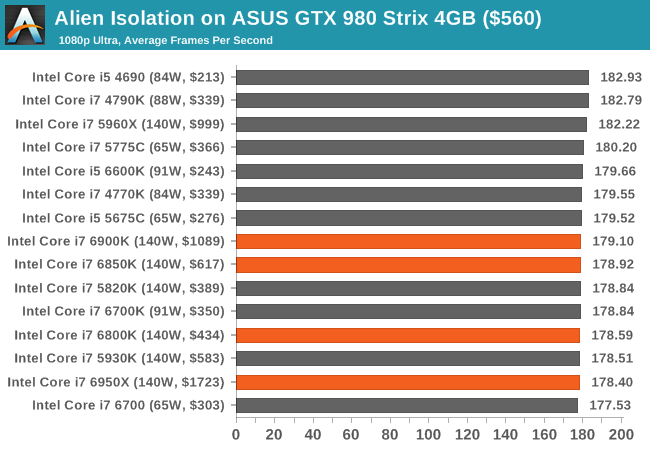
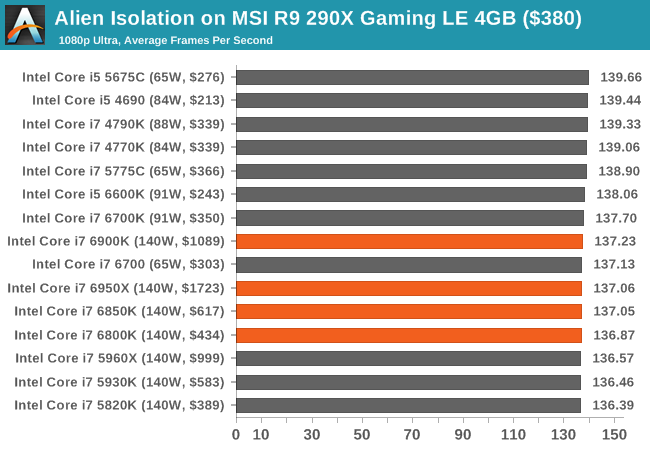
Total War: Attila
The Total War franchise moves on to Attila, another The Creative Assembly development, and is a stand-alone strategy title set in 395AD where the main story line lets the gamer take control of the leader of the Huns in order to conquer parts of the world. Graphically the game can render hundreds/thousands of units on screen at once, all with their individual actions and can put some of the big cards to task.
For low end graphics, we test at 720p with performance settings, recording the average frame rate. With mid and high range graphics, we test at 1080p with the quality setting. In both circumstances, unlimited video memory is enabled and the in-game scripted benchmark is used.
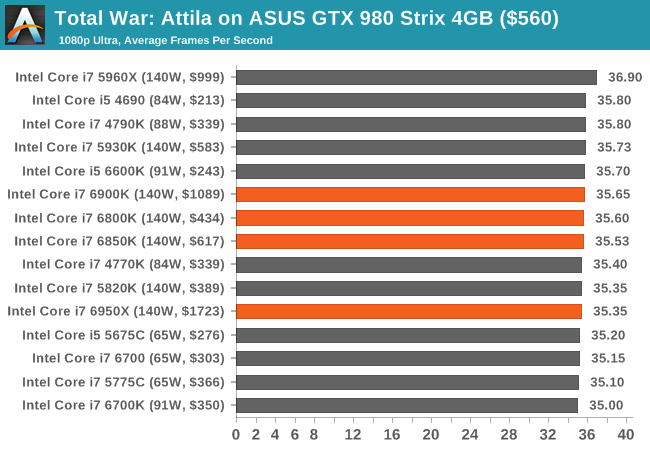
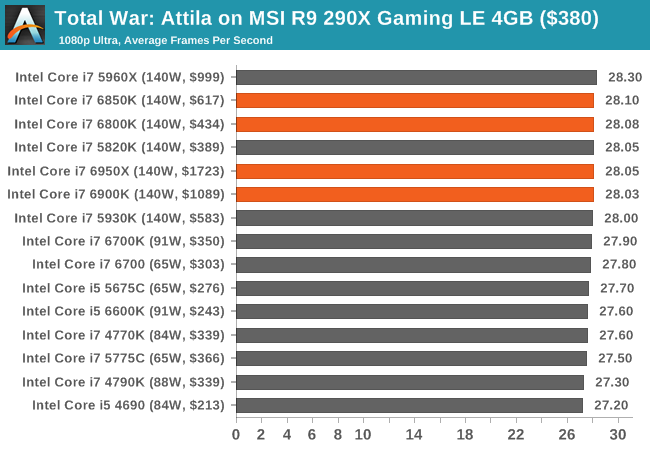
Grand Theft Auto V
The highly anticipated iteration of the Grand Theft Auto franchise finally hit the shelves on April 14th 2015, with both AMD and NVIDIA in tow to help optimize the title. GTA doesn’t provide graphical presets, but opens up the options to users and extends the boundaries by pushing even the hardest systems to the limit using Rockstar’s Advanced Game Engine. Whether the user is flying high in the mountains with long draw distances or dealing with assorted trash in the city, when cranked up to maximum it creates stunning visuals but hard work for both the CPU and the GPU.
For our test we have scripted a version of the in-game benchmark, relying only on the final part which combines a flight scene along with an in-city drive-by followed by a tanker explosion. For low end systems we test at 720p on the lowest settings, whereas mid and high-end graphics play at 1080p with very high settings across the board. We record both the average frame rate and the percentage of frames under 60 FPS (16.6ms).
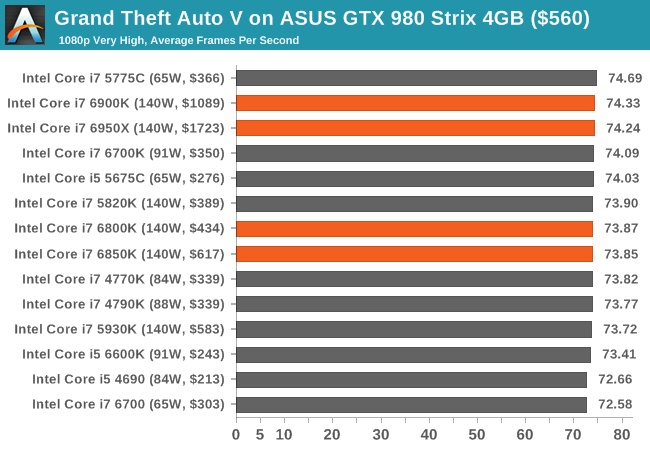














205 Comments
View All Comments
RealLaugh - Tuesday, May 31, 2016 - link
Why are there no 4k resolution benchmarks, did I miss something?Surely the consumer base for this tech are not going to be playing on 1080p?!
Isn't that where the CPUs would start to get ahead of the i5 and i7 products?
Call me out if I'm mistaken!
dannybates - Tuesday, May 31, 2016 - link
You are mistaken.Lower Res = More CPU Dependent, Less GPU Dependent
Higher Res = More GPU Dependent, Less CPU Dependent
Lowering the resolution of a computer game or software program increases the dependency on the CPU. As the resolution decreases, less strain is placed on the graphics card because there are fewer pixels to render, but the strain is then transferred to the CPU. At a lower resolution, the frames per second are limited to the CPU's speed.
RealLaugh - Tuesday, May 31, 2016 - link
ok thanks now I know.adamod - Wednesday, June 1, 2016 - link
i shall purchase a xeon e5 2699 v4 and a GT210.....i was to play crysis at 800x600 but ULTRA!!!Ph0b0s - Tuesday, May 31, 2016 - link
The only thing for gaming might be scaling with more cores. With Directx 12, it makes better use of multi-core CPU's. It would be good for Anandtech to do a story on how Directx 12 scales with more cores, now we can have up to 10. I don't know if there are enough DirectX 12 games to do this yet? If you don't get an benefit for having more that 4 cores then Broadwell-E will not be needed for gaming. If you get a benefit over 4 cores that will be the case for needing Broadwell-E for gaming.jabber - Tuesday, May 31, 2016 - link
Yeah I'm looking forward to playing some DX12 games in 2018 with my DX14 capable GPU. C'mon folks that's how it always works.adamod - Wednesday, June 1, 2016 - link
here is some limited date....it shows ashes and gears at least along with some synthetics:http://www.pcworld.com/article/3039552/hardware/te...
Wardrop - Tuesday, May 31, 2016 - link
Good banner photo! Liking it.r3loaded - Tuesday, May 31, 2016 - link
Yay, price gouging!AMD pls save us.
ochadd - Tuesday, May 31, 2016 - link
Pricing is just prohibitively high imho. I'm still rocking SandyBridge and was hoping the lowest end would basically by a 5820 with 40 lanes unlocked. Would have made a great upgrade. With the pricing I think it's best to wait until the next version of the regular desktop (Kaby Lake?) to pull the trigger.